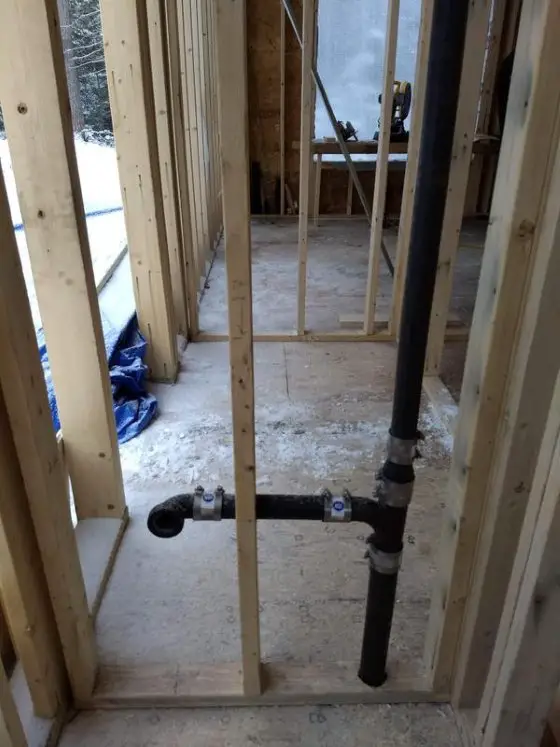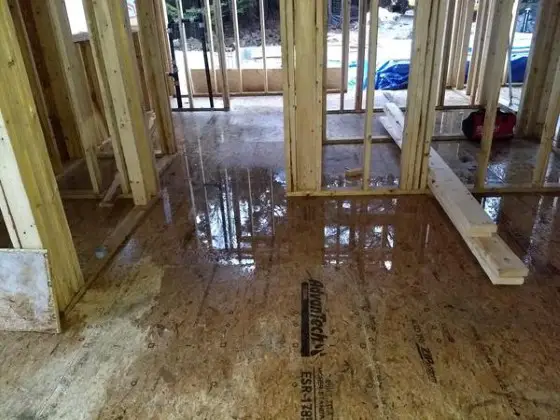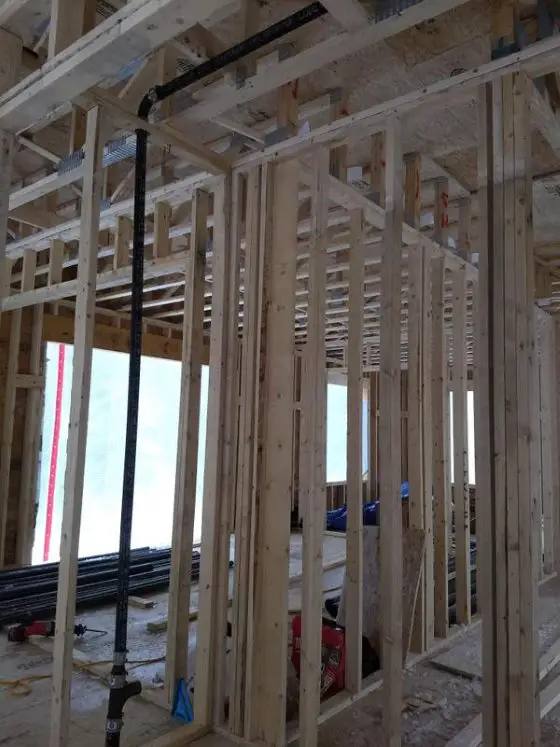January 12, 2019 AsktheBuilder Newsletter
Are you a new subscriber? Welcome!
All others, thanks for your loyalty and bravery.
I'm back home in central New Hampshire. Eight days ago, I was helping unload 9,008 pounds of cast iron drain and vent pipe, the fittings, and the most wonderful no-hub rubber couplings that have the stainless steel band clamps.
You use these special newer couplings to make leakproof joints between the cast iron pipe and fittings. Gone are the days of oakum and molten lead, although I've poured quite a few lead joints in my day.
If you're a new subscriber, I'm helping to build my daughter and son-in-law's new home on Mt. Desert Island in Downeast Maine.
Tyler Pipe is partnering with me to help spread the word about why cast iron is such a better product for plumbing drain lines in many applications. CLICK HERE for a partial list of why you might want to install cast iron in at least part of your next home.
I was able to get about four days of piping work in enduring some wretched conditions. Two of the four days, it was raining and there's not yet a roof on the house. My son-in-law and I were kneeling in puddles of water and water was dripping on us most of the day.
There's a real urgency to get the house done for a reason I'll share in about a month. Suffice it to say everyone wanted to break ground earlier, but it just didn't happen. It was no one's fault, but a series of events kept pushing back the start date.
It's not ideal to build in the winter, but it's possible.
Here are just a few photos to show some completed plumbing rough-in work. In case you don't know it, I've been a master plumber since age 29 so I'm enjoying putting in the pipe.
I'll be taping videos that explain everything to you about the plumbing, but I may not cover a burning question you may have about cast iron drain and vent pipe.
CLICK HERE to ask your question about cast iron and I'll do my best to answer your question when I shoot one of the videos.



You may be wondering, "Tim, does all that standing water on the subfloor hurt it? What about all the wood studs and floor trusses getting wet?"
CLICK HERE to get a handle on how well framing lumber and rain play together. Seriously, CLICK HERE and read this second column so you can sleep at night.
Asbestos
I know two people, a husband and wife, who died from asbestos exposure. The lung disease is asbestosis.
Ron was a union plasterer who worked with materials that included asbestos. Judy, I'm sure, hugged Ron each day when he got home from work and ingested the asbestos on his clothes. She also probably ingested more fibers if she did his laundry.
If you do a little research, you'll discover that those at risk of contracting the disease have had prolonged exposure to asbestos.
A few days ago a PR person reached out to me about interviewing an expert about asbestos. In his email he said, "I just wanted to follow up and see if you'd like to speak with XXXXX for Asbestos.com, about the dangers of asbestos exposure during home and building remodeling."
Before getting the PR email, I knew that prolonged exposure was part of the recipe so I wanted to get the expert on the record about when that clock started ticking.
In other words, when does exposure to asbestos cross the line to being prolonged.
I responded to the PR person saying I'd like to talk with the advocate, but that my questions would be quite out of the ordinary.
What I've discovered in my journey through life is that there's always an agenda. Sometimes it's out in the open and other times it's hidden.
I gave the PR person a partial list of questions I'd ask. Here are a few of them:
Do you have independent case studies showing the minimum amount of exposure that is required to create a significant risk of contracting asbestosis from disturbing asbestos around the typical home?
Will removing a vinyl asbestos tile floor from a house put the average person at risk if the tiles are not pulverized during the demolition?
Who's really at risk of contracting the disease in normal day-to-day building and remodeling?
Usually PR people get right back - within hours - when interest is shown about their efforts. So far I've heard nothing but crickets which leads me to believe the answers to my questions might not want to see the light of day.
I share all this with you only to let you know that I'm not your typical bobblehead media person that might just throw up some softball questions to an expert. I tend to try to use some common sense and critical thinking when I compose my questions.
I think you also need to know that I handled my fair share of asbestos in the past 40 years on my jobs. Some was thin asbestos wrap that was on ancient heating pipes connected to gravity furnaces. I always wet it down well and kept it wet while disturbing it.
I removed lots of VAT, some of it breaking into pieces until I discovered that dry ice is the best way to remove full pieces. You slide a block of dry ice onto each tile and in a second or two they contract enough to pop up off the floor.
Bottom line, I don't have asbestosis and I'm not exhibiting any symptoms. Let's hope the PR person will get back with me next week.
That's enough for today.
I'll have more for you next week for sure.
Tim Carter
Founder - www.AsktheBuilder.com
Get Certified Organic CLEAN - www.StainSolver.com
Amateur Radio Man - www.W3ATB.com
Do It Right, Not Over!